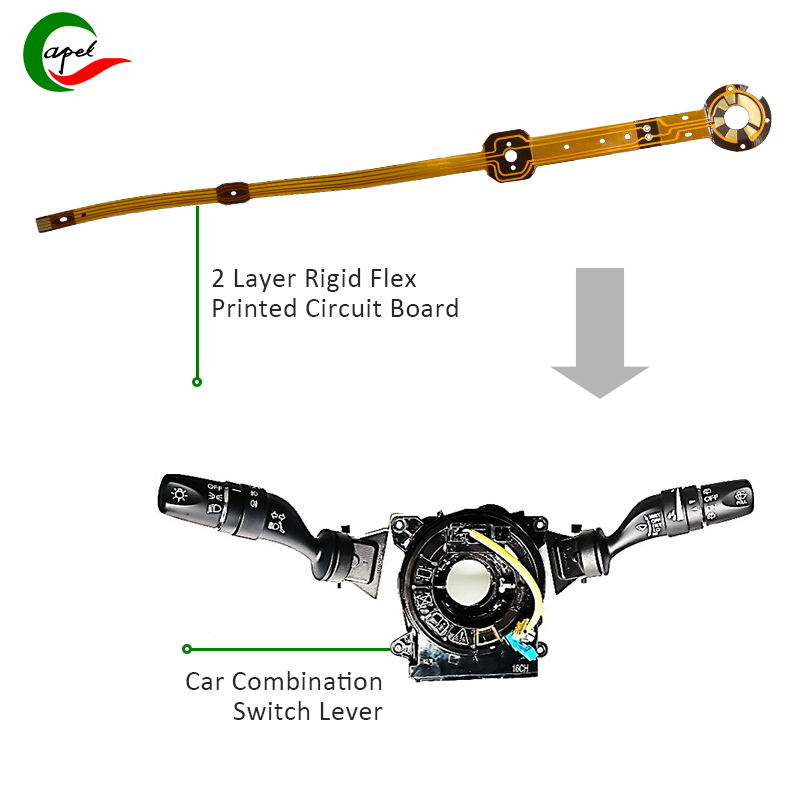Introduce:
In this blog post, we will explore the important considerations and techniques to follow to reduce trace length and ultimately improve HDI flex PCB signal quality.
High-density interconnect (HDI) flexible printed circuit boards (PCBs) are an increasingly popular choice in modern electronics due to their compactness and versatility. However, designing and implementing optimal component placement and connection methods for HDI flexible PCBs can be a challenging task.
The importance of component placement and connection methods:
Component layout and connection methods have a significant impact on the overall performance of HDI flexible PCBs. Properly optimized component placement and routing techniques can enhance signal integrity and minimize signal distortion. By reducing line length, we can minimize transmission delays and signal losses, thereby improving system reliability and performance.
Things to consider when choosing component layout:
1. Signal flow analysis:
Before starting component placement, it is critical to understand the signal flow and determine the critical path. Analyzing signal paths allows us to optimize the placement of components that significantly impact signal integrity.
2. Placement of high-speed components:
High-speed components, such as microprocessors and memory chips, require special attention. Placing these components close to each other minimizes signal propagation delays and reduces the need for longer traces. Additionally, placing high-speed components close to the power supply helps reduce power distribution network (PDN) impedance, aiding signal integrity.
3. Grouping of related components:
Grouping related components (such as digital and analog components) in a layout prevents interference and crosstalk. It is also recommended to separate high-speed digital and analog signals to avoid coupling and interference.
4. Decoupling capacitor:
Decoupling capacitors are critical to maintaining stable power to integrated circuits (ICs). Placing them as close as possible to the IC’s power pins reduces inductance and increases the efficiency of power supply decoupling.
Things to note when choosing a connection method:
1. Differential pair routing:
Differential pairs are commonly used for high-speed data transmission. Proper routing of differential pairs is critical to maintaining signal integrity. Keeping traces parallel and maintaining a constant spacing between traces prevents signal skew and reduces electromagnetic interference (EMI).
2. Impedance control:
Maintaining controlled impedance is critical for high-speed signal transmission. Using controlled impedance traces for high-speed signals can minimize reflections and signal distortion. Incorporating impedance calculators and simulation tools into the design process can greatly aid in achieving optimal impedance control.
3. Direct routing:
To reduce route length, it is recommended to choose straight routes whenever possible. Minimizing the number of vias and using shorter trace lengths can significantly improve signal quality by minimizing signal loss.
4. Avoid bends and corners:
Bends and corners in traces introduce additional impedance and signal discontinuities, resulting in signal attenuation. Routing in straight lines or large-radius curves helps minimize signal reflections and maintain signal integrity.
Results and benefits:
By following the above considerations and techniques, designers can achieve fully optimized component placement and connection methods for HDI flexible PCBs. You can get the following benefits:
1. Improve signal quality:
Reducing line length reduces transmission delays, signal loss, and signal distortion. This enhances signal quality and improves system performance.
2. Minimize crosstalk and interference:
Proper component grouping and separation can minimize crosstalk and interference, thereby improving signal integrity and reducing system noise.
3. Enhanced EMI/EMC performance:
Optimal cabling techniques and impedance control minimize electromagnetic interference and improve the electromagnetic compatibility of the system.
4. Efficient power distribution:
Strategic placement of high-speed components and decoupling capacitors improves power distribution efficiency, further enhancing signal integrity.
In conclusion:
To improve signal quality and minimize trace lengths in HDI flex PCBs, designers must carefully consider component layout and connection methods. Analyzing signal flow, properly placing high-speed components, utilizing decoupling capacitors, and implementing optimized routing techniques play a vital role in achieving optimal signal integrity. By following these guidelines, electronics manufacturers can ensure the development of high-performance and reliable HDI flexible PCBs.
Post time: Oct-04-2023
Back







